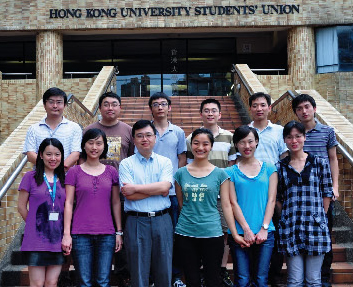
Dr T Zhang’s Environmental Biotechnology research group
Additionally, we also observed that the dominant AOA enriched in a
laboratory reactor belonged to Crenarchaeotal Group I.1a in phylum
Crenarchaeota , while that the dominant AOB in the reactor fell to the
genus Nitrosomonas. The analyses also suggested that AOB community were
more sensitive than that of AOA to operative conditions, such as
ammonia loading and dissolved oxygen (please refer to our paper:
Characterization and quantification of ammonia-oxidizing Archaea (AOA)
and Bacteria (AOB) in a nitrogen-removing reactor using T-RFLP and
qPCR, Applied Microbiology and Biotechnology 87: 1167-1176, 2010).
Furthermore, we developed a reactor operated under
limited dissolved oxygen (DO) level to conduct the partial
nitrification process for energy saving nitrogen removal. The findings
showed that nitrogen in wastewater could be removed through the
Complete Autotrophic Nitrogen Removal Over Nitrite (CANON) process for
saline wastewater in a continuous reactor at DO concentrations of 0.5
mg L-1 (please refer to our paper, Autotrophic biological nitrogen
removal from saline wastewater under low DO, Journal of Chemical
Technology and Biotechnology 85(10): 1340-1345, 2010).
The results of this project has provided new scientific knowledge about
the roles of AOA in partial nitrification (ammonia oxidization to
nitrite) in wastewater and valuable information
that will be needed to further develop the partial nitrification
processes to save energy and reduce carbon footprint, including single
reactor system for high activity ammonium removal over nitrite,
complete autotrophic nitrogen removal over nitrite and oxygen limited
autotrophic nitrification and denitrification.
Dr Tong ZHANG
Environmental Biotechnology Lab
Department of Civil Engineering
The University of Hong Kong
zhangt@hkucc.hku.hk
